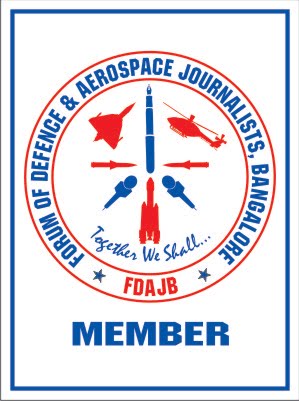By Anantha Krishnan M
Bengaluru, Dec 17: Amidst the ongoing ‘controversy and confusion’ over whether the Indian Air Force (IAF) is keen to go ahead with the home-grown Light Combat Aircraft (LCA) Tejas programme beyond the first and second blocks of 20 each, the sixth series production variant from the hangars of Hindustan Aeronautics Limited (HAL) took to the skies for the first time sans any fanfare, recently.
The maiden flight of SP-7, the sixth out of the total 20 to be delivered in the Initial Operational Clearance (ICO) standards, took place on December 12 at the HAL airport here, with zero snags being reported by the pilot after completing the Profile-1 of the flight envelope.
Tejas SP-7 was piloted by Gp Capt K K Venugopal (Retd). With this, the IAF No 45 Squadron (Flying Daggers) would soon have half-a-dozon of Tejas platforms to operate with. Currently being raised in Bengaluru, the No 45 Squadron will eventually move to Air Force Station Sulur, near Coimbatore.
IAF is ramping up its infrastructure at AFS Sulur with modern hangars being reading to accommodate Tejas 16 fighters and four trainers, part of the first block of delivery from HAL.
SP-5 from Kiran hangar will join the party soon: The fifth Tejas series production platform SP-5, being built at the second production line established at the Aircraft Division by HAL, too will have its maiden flight soon. HAL converted the erstwhile Kiran hangar to set up this additional production line, which boasts of producing three aircraft per year, when fully operational.
V Sridharan, who retired as the Executive Director of LCA Division recently, says that Tejas platforms up to SP-10 are currently under equipping in Final Assembly Hangar.
“Very soon they will be followed by SP-11 and SP-12. Kudos to the entire Team of Tejas involved in the manufacturing activities for their untiring efforts in making this possible despite adverse criticism in the last three years, both in terms of quality and quantity,” says Sridharan.
Frequent modifications a concern: Interestingly, he says that the even after delivering six series production platforms by HAL, the Standard of Preparation (Build to Print Documents) have not been frozen, despite the IOC nod in December 2013.
“The introduction of more than 270 modifications after accordance of IOC, in the name of concurrent engineering is a potential source of introducing uncertainties during the production phase. This can affect time-lines on a regular basis. These changes even warrant design and manufacturing of new parts which results in delays. All these changes are introduced towards envisaged performance and system improvements as per the requirements of IAF,” says Sridharan, who has been credited with establishing the new LCA Division.
He says the LCA Division developed ICY (interchangeability) tools for all 147 panels and for 830 pipelines out of 934 pipelines within the build of first seven SP Tejas aircraft itself.
“This is a huge shift compared to any other projects in HAL, that too at such short span of time after the release of RSD (Release of Service Documents). Even now, only concept of replaceable pipes is existing in other projects. LCA has gone far ahead in the area of ICY compliance through the dedicated efforts of its tooling department,” claims Sridharan.
Outsourced all major structural modules: He says HAL, in an effort to further augment the production capacity, has outsourced all the major structural modules to private partners, including sub-assemblies, role equipment, pipelines, sheet metal part electrical looms and panels.
“This would enhance the production rate to 16 per year from the year 2019 onwards apart from developing an eco-system for manufacturing of a 4.5 generation fighter aircraft in India. This is likely to materialize by mid-2018 and thereafter, HAL would further be able to ramp up the production rate to 20 aircraft-plus every year,” adds Sridharan.
On the Final Operational Clearance (FOC) front, sources at Aeronautical Development Agency (ADA) say that the programme will complete all tasks mandated within 2018.
“There are only few more crucial test points to be achieved. Then there could be additional requirements. Hopefully, the FOC should be in place in the third quarter of 2018,” says a top scientist.
Currently, Tejas LSP-8 is optimising flight profiles with the in-flight refueling probe (IFR). The air-to-air refueling trials will begin early 2018. Four Tejas variants recently undertook night attack missions for the first time, as per the FOC schedule. @Mathrubhumi






















